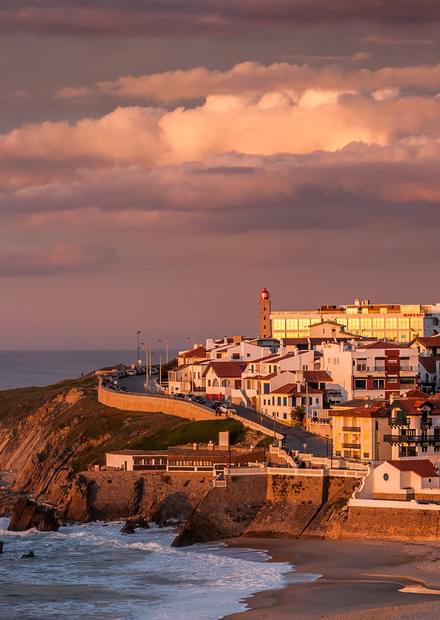The origins of São Pedro de Moel, 26 km away from Leiria, date back to the foundation of the Portuguese nation. These lands were then donated to the Monks of Alcobaça in 1153 who have played a major role in the organisation of the territory, as well as in the development of new agricultural techniques in the region.
São Pedro de Moel was a deeply charming beach resort that attracted the families of wealthy industry owners of nearby Marinha Grande and families from Lisbon, Coimbra and Santarém who bought their Summer houses here. In the beginning of the 20th century, São Pedro de Moel had already a casino and several hotels and guesthouses, thus becoming a popular beach destination.
Architecture can be a great motto to explore this surprising beach. The whole urban planning was designed in the mid 20th century by the Portuguese architect José de Lima Franco. The visual links with the sea, the low building density and the communion with the landscape, preserving the maritime pine and integrating it into the houses, have remained to this day. The modernist architecture route of São Pedro de Moel displays the timeless genius of Portugal's most renowned architects: Manuel Tainha, Charters Monteiro, Camilo Korrodi, Frederico George or Egas José Vieira.
This cliffy beach is suitable for surf and bodyboard and the water can be slightly cold. In 2024 its waters were once again awarded Gold Quality. It is situated near the pine forest of Leiria and it is crossed by the Atlantic Road cycling path.
The Lighthouse Penedo da Saudade is one of the greatest icons of São Pedro de Moel. Legend has it that this was the place where the Duke of Caminha and the Duchess of Faro have sworn eternal love. The Duke was accused of conspiring against the king and was therefore condemned to death. The Duchess of Faro tried to dissuade the king, but unfortunately he did not listen to her appeal. On the day after the execution, the Duchess came back to São Pedro Moel beach to recall the beautiful memories they shared. She then saw dazzling roses that she called "saudades", in honor of her lost love. Hence, the name of this iconic lighthouse, opened for visits on Wednesdays.




















